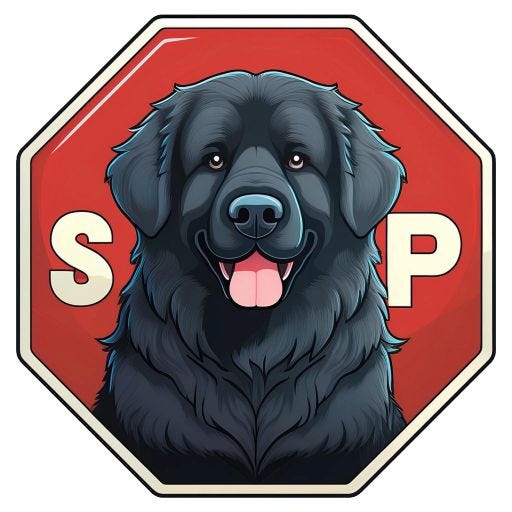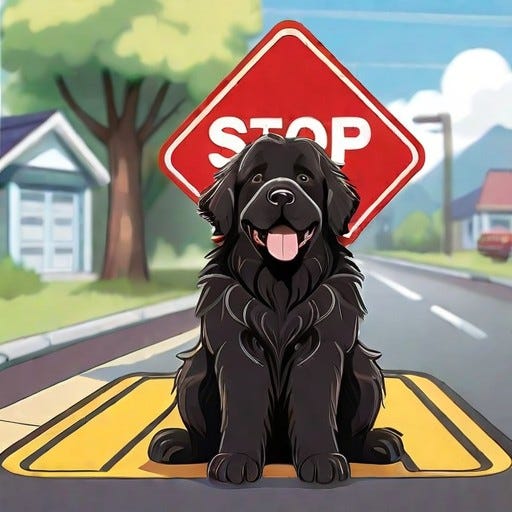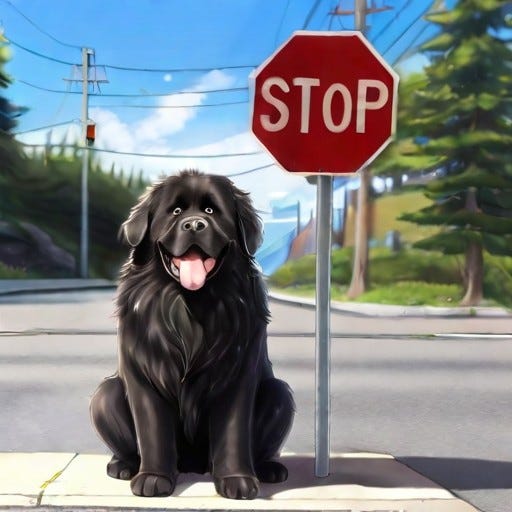Leash Lessons: Stay during Chaos
This week Anna explains how to teach your dog to stay. She demonstrates with Crokell and (after three or four takes) with Dante in a video.
Introduction
It has been a few weeks since we had had an installment of Chaos Critters Leash Lessons! I’ve been going to a new training group this last month and they are very different from all the other groups I have worked with. That being, Crokell appears to really like their way of teaching, or maybe just the fact that he never knows what we will do next make his tail pop up and do the soft happy wag. Either way, my new training group has been impressed with the stay that Crokell has. So, I thought I would go over it here and show part of how I have been working on the concept to stay and wait with Dante.
At the moment, Dante’s stay is … short. Crokell however is a stay champion. In the new class, they do a lot of distractions and Crokell almost always barely looks at the distractions, including when they use a leaf blower, drop items, and throw tennis balls… Granted the last one is super hard for Crokell, but that is what the classes are for, to push you to be better.
Therefore, today we will focus on teaching our newest critter to stay. This command it definitely in my top 10 commands and something that we always have to work on. With Dante it has been a little harder than Crokell, whose stay has always been his best, if not his favorite, trick.
Teaching Your Newest Critter to Stay
While “stop” might be the a little pause button for getting a mischief maker to hold still for a moment, stay is still a foundational skill. Stay can help you regulate where, how, and when your critter acts. Since timing is everything, a good stay matters. Let me tell you, it felt amazing that first time, when Crokell can stay with the door open, when I go into the garage and change the laundry. Or if I need him to lay down and stay, while we inspect something.
Now, one doesn’t start with staying for minutes at a time. No, at first it is that slow delay, that gets longer as things get better. Training after all is about both rewarding and correcting your critter. The reward of affection - praise, play or treats - often will build up energy, making stay a process of patience for both you and your pup.
The Process
Find the Perfect Spot
When starting out, I don’t suggest jumping into an advance class and demanding a 5 minute long stay. Instead, I would start in a quiet area in your home or yard where distractions are minimal. At the beginning using a small cozy corner works wonders. I would also start training stay after a good workout. You want the puppy to be a little tired, or at least not bubbling over with energy the first few times you do a stay.
Get Your Pup’s Attention
Get your pup’s attention, you can do this by making noise, or using a treat, but the focus should be more on you than the smelly morsel.
The Stationary Command First
If they know sit or down, give them that command and then work on keeping them in that place for longer. You do this by correcting them if they pop up (a gentle tap, and getting them to sit again). When they do what you want, give them a treat or chin scratch the when they stay. At first the stay should be for 5 seconds, then 10 seconds and so on. (Or even less time!) I suggest only doing it a few time a day and when they are a little tried. After all a pup is a bubble of energy and staying is harder the more energy they have.
Introduce “Stay”
While your pup is sitting or down make sure you have leash that will keep them more or less in place to begin with. It also let’s you give little light corrections if needed.
Say “Stay”: Clearly say “stay” while holding your hand out in front of you, palm facing them.
Step Back: Take a small step back while maintaining eye contact. If they stay, reward them immediately with praise (and the treat)!
If they don’t, correct them and repeat a few times but always end on a high note.
Increase the three D’s Gradually: As they become more reliable, gradually increase the distance, duration and distractions before rewarding. Usually, if you increase the distance you decrease the duration or distractions.
Celebrate Every Success
Each time your pup stays put, shower them with praise (and treats)! I like to use stay as something we do before we go outside and run and play. It is hard for Dante to sit still. But he knows a reward is going to be playing one of his favorite games. If they move, do a light quick correction (or I sometimes make an eeh sound to let them know what they just did is incorrect.) Then calmly guide them back into place, without frustration.
Practice Makes Perfect
Keep practicing in various locations and with different distractions. Each successful stay builds their confidence and reinforces the behavior! We regularly practice stay. When out on walks, practice “stay” before crossing streets. It’s not only safer but also reinforces their training in real-world situations! With Dante we practice stay around 5 times a day: (1) when he leaves his crate in the morning, (2) before he eats his breakfast, (3) each time he goes outside, (4) when we go for a walk and we get his leash, and (5) before he gets dinner. In the beginning, each of them are short training sessions, but later they become just part of the behavior. Making our pup wait before he eats is one of my favorites but also one of the hardest to master.
For a Pawsitive Experience
Practice in Different Environments: Once your pup masters a command at home, practice in various locations. Start around the house, then going out side, then down the street and so on. Remember moving locations counts as a “distraction” so you will want to shorten the duration or distance of the stays. Later you can join a class where they drop toys on the floor, have an instructor that dances around singing “Big dog, little puppy” in difference voices or throws tennis balls around the room. Don’t expect to start there…. These types of distractions will later be a blessing as your pups generalize their learning and it will prepare them for real-world situations.
Always end on a high note: The last stay doesn’t have to be the longest, the most distracting, or the from the furthest away, but it should be good. Even if you have to go back to a shorter distance. I usually end the session with Dante getting to get his food or we play a game. Because training should be fun!
Tip of the Week
Introduce distractions like toy aliens or space sounds to make “stay” training feel like an intergalactic mission. After all better preparation for an alien invasion than with a well trained pup?
Critter’s Weekly Question
What kind of alien creature do you think would be the most effective at testing your pet's ability to stay and why?







For Tenshi - any alien creature would be a test...he loves everyone.
For Ishin - any alien creature who approached him would be the test, as he would either skinch away behind/under me, or run away.